This is the bling that will be on display at King Charles' coronation
- Oops!Something went wrong.Please try again later.
- Oops!Something went wrong.Please try again later.
- Oops!Something went wrong.Please try again later.
- Oops!Something went wrong.Please try again later.
- Oops!Something went wrong.Please try again later.
- Oops!Something went wrong.Please try again later.
LONDON — A coronation offers a rare glimpse into the British royal family’s famous treasures, the crown jewels, which are normally locked away in the medieval Tower of London.
The crowning of King Charles III on Saturday will see the monarchy’s regalia and finery, seen in public only on important state occasions, on full display.
Here is a guide to what will be on display and what it means:
St. Edward’s Crown
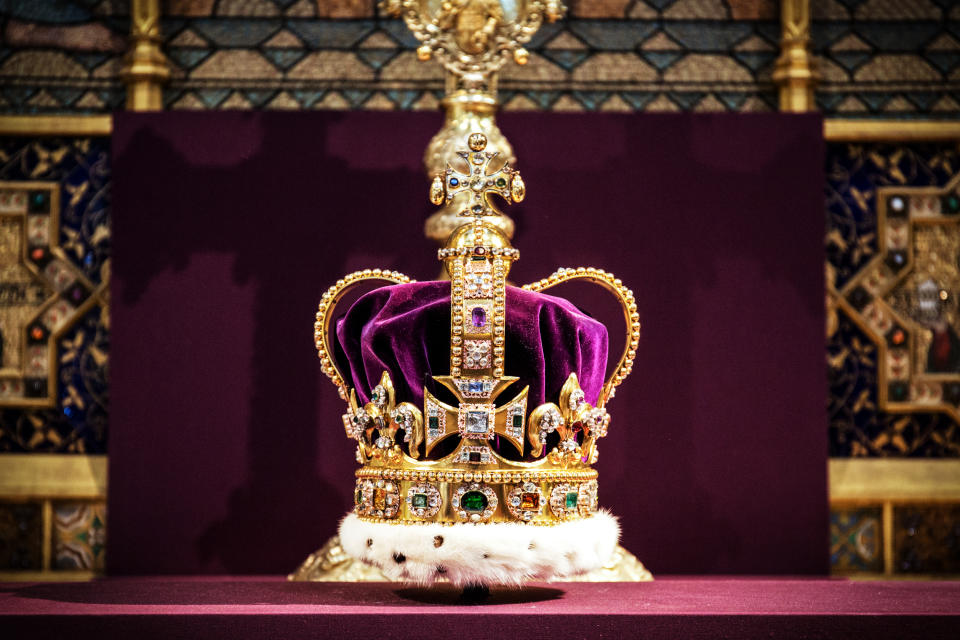
The traditional coronation crown will be placed on Charles’ head by the archbishop of Canterbury as the culmination of the ceremony. The St. Edward’s Crown is used only for this purpose.
It weighs a hefty 5 pounds, and monarchs have to spend time practicing wearing it — which Charles watched his mother, Elizabeth II, doing before her coronation in 1953, he recalled in 2012.
It was made in 1661 to replace a medieval crown, which was believed to have dated to the 11th century and Edward the Confessor, the last Anglo-Saxon king of England.
The original crown was destroyed, along with most of the other crown jewels, after Charles I was executed by Oliver Cromwell and the Parliamentarians when the monarchy was abolished in 1649. St. Edward’s Crown was made for Charles II’s coronation after the monarchy was restored in 1660.
Follow coronation ceremony live updates here
While it is not a replica of the original design, it does share some similarities — it features four crosses and four fleurs-de-lis, along with two arches. It is topped with an orb and a cross, symbolizing the Christian world.
Its gold frame is lined with rubies, amethysts, sapphires, garnets, topazes and tourmalines. It has a velvet cap, and the headband is made of ermine.
Imperial State Crown
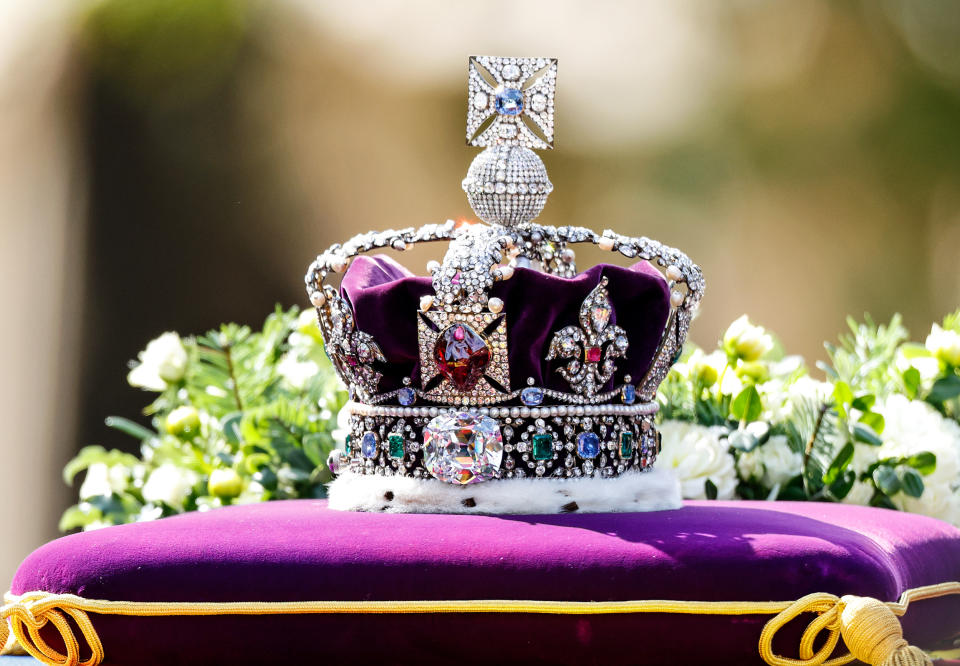
Charles will wear the Imperial State Crown as he leaves Westminster Abbey. It was made for the coronation of George VI in 1937, closely modeled on a crown made for Queen Victoria in 1838.
Queen Mary’s Crown
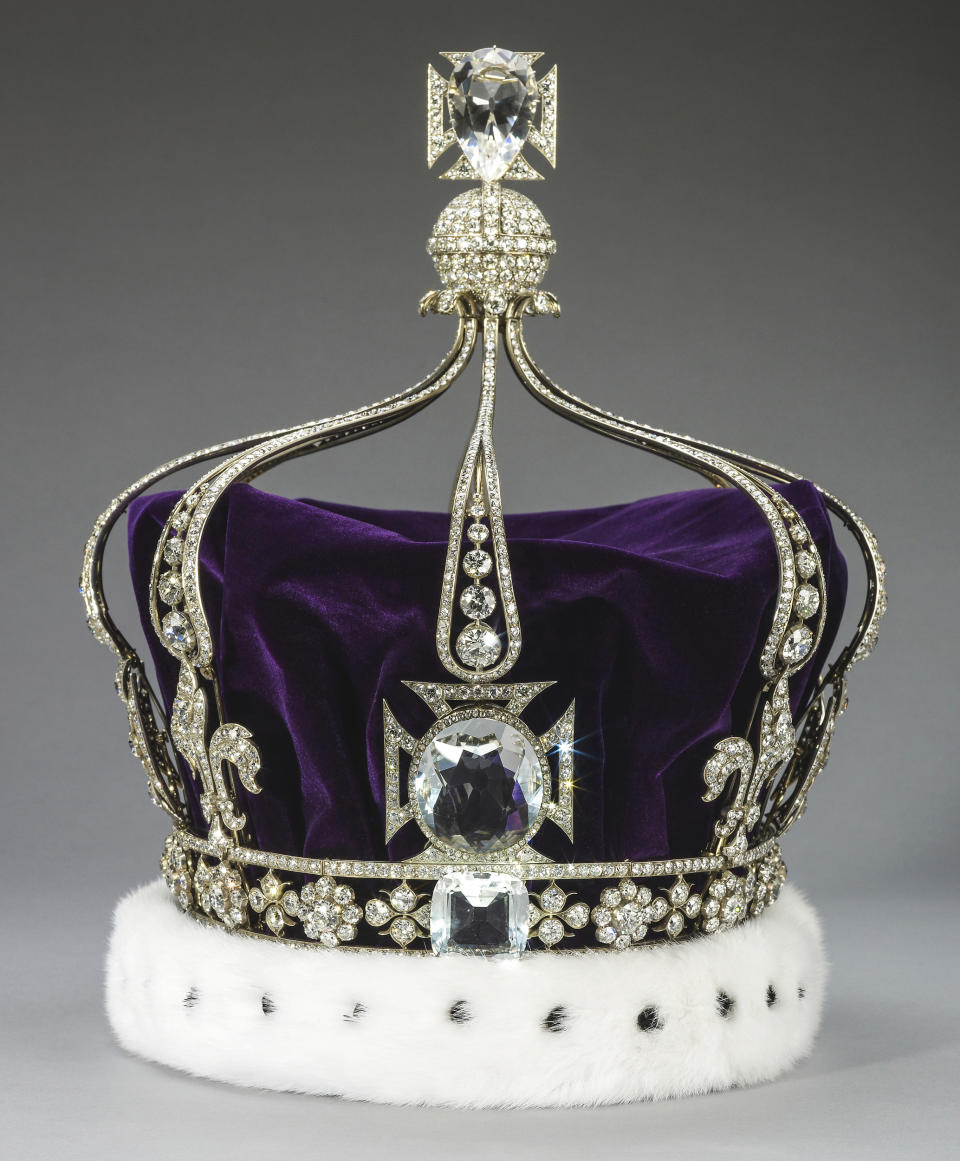
Queen Camilla will wear Queen Mary’s Crown, an ornate piece made for Mary, Charles’ great-grandmother and the wife of George V, for their coronation in 1911. Buckingham Palace has stressed that it is the first time a crown will have been reused at a coronation since the 18th century, “in the interests of sustainability and efficiency.”
The crown, which has 2,200 diamonds, has been refitted with the Cullinan II, IV and V diamonds, which Elizabeth often wore as brooches. The Cullinan diamond was discovered in a British-owned South African mine in 1905 and given to Edward VII two years later after no one came forward with enough money to buy it.
Where is the Kohinoor?
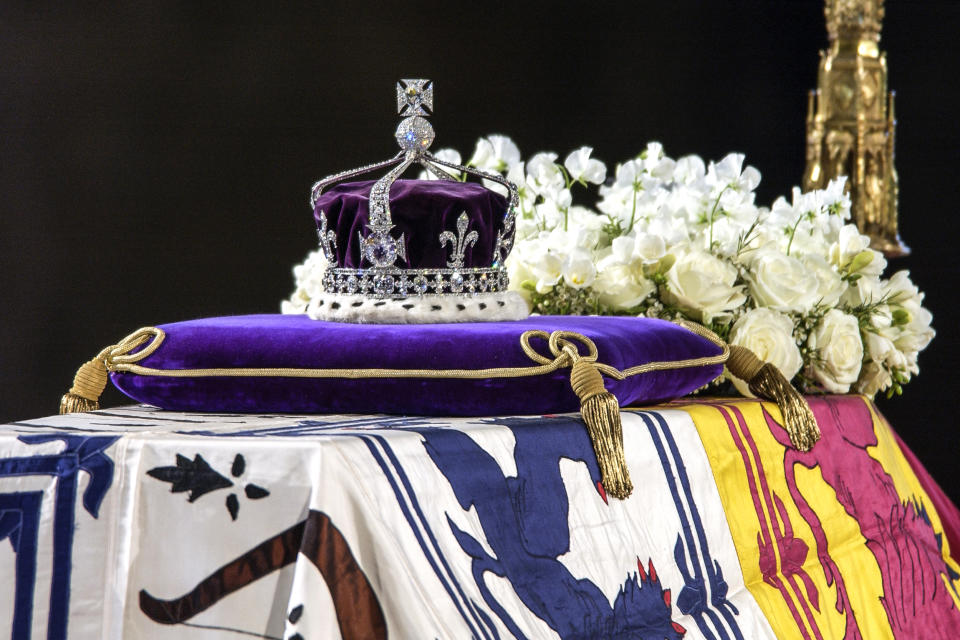
Camilla’s choice of the Queen Mary Crown may have a political aspect: It avoids the use of the Queen Mother’s crown, which includes the Kohinoor, a famous 105-carat diamond, also spelled Koh-i-noor, which is one of the biggest in the world and has a troubled history.
The diamond is believed to have been mined in India in the 13th century. In 1849, a young maharaja, a regional ruler, who was only 10 or 11 years old, was coerced into giving it to the British when the province of Punjab was annexed.
A spokesperson for India’s ruling Bharatiya Janata Party said in October that the diamond’s use would have reawakened “painful memories of the colonial past.”
Sovereign’s scepter with cross
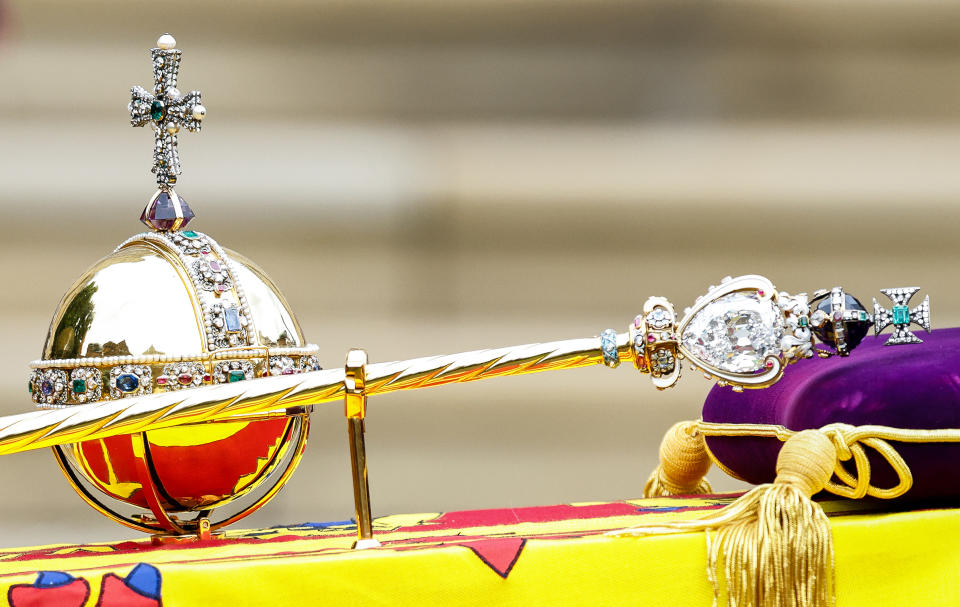
This highly symbolic item includes the Cullinan I diamond, the largest colorless cut diamond in the world, also known as the First Star of Africa. It weighs 3.7 ounces, and the staff had to be reinforced when the stone was added.
The scepter, made for Charles II in 1661, represents the monarch’s power — even though in modern Britain, the role of a king is largely symbolic and constitutional, rather than all-conquering.
Various additions have been made over the years: George IV added an enameled rose, thistle and shamrock representing England, Scotland and Ireland (apparently overlooking Wales).
Sovereign’s scepter with dove
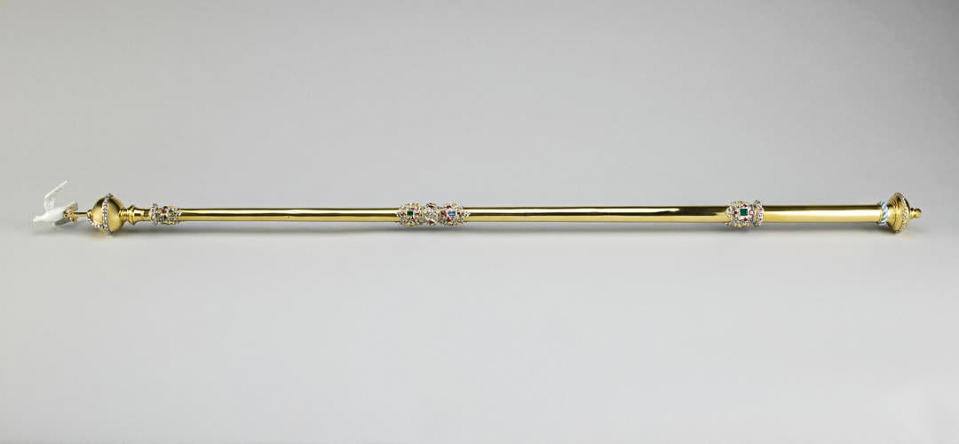
A plain gold rod topped with an enameled dove perched on a gold cross representing the Holy Ghost, this rod is meant to symbolize Charles’ spiritual role as the head of the Church of England.
Traditionally known as “the rod of equity and mercy,” it was created by the crown jeweler, Robert Vyner, in 1661.
Sovereign’s orb
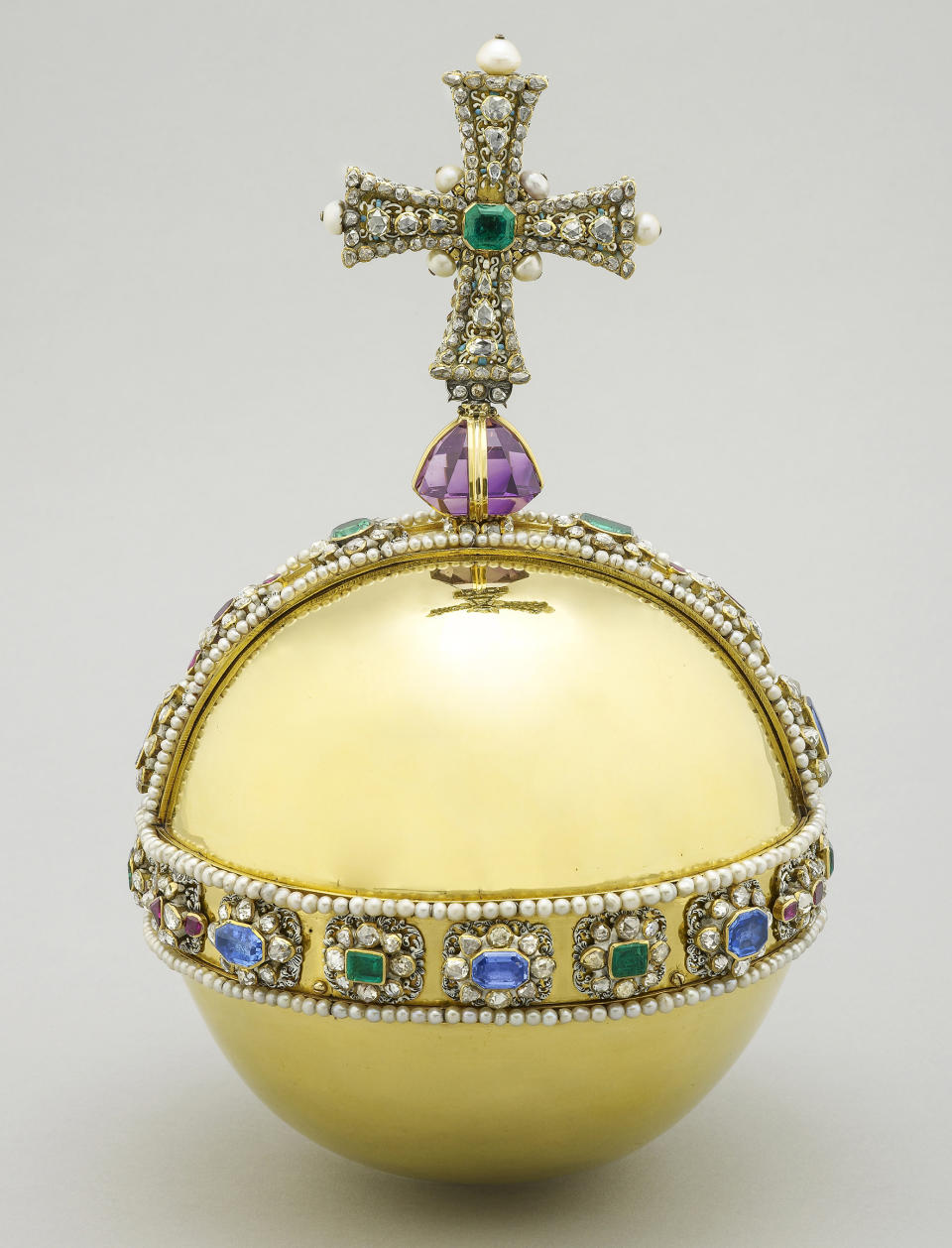
Measuring almost 11 inches and weighing nearly 3 pounds, the orb represents the monarch’s power and symbolizes the Christian world. During the coronation service, it will be placed in Charles’ right hand as he is invested with the symbols of sovereignty. It will then be placed on the altar before the moment of crowning.
This, too, was made for Charles II’s coronation in 1661 by royal goldsmith Robert Vyner. The sphere is constructed from hollow gold and is adorned with emeralds, rubies, sapphires, diamonds, pearls, an amethyst and a glass stone. It is divided into three sections with bands of jewels, for each of the three continents known in the medieval period.
Sovereign’s ring
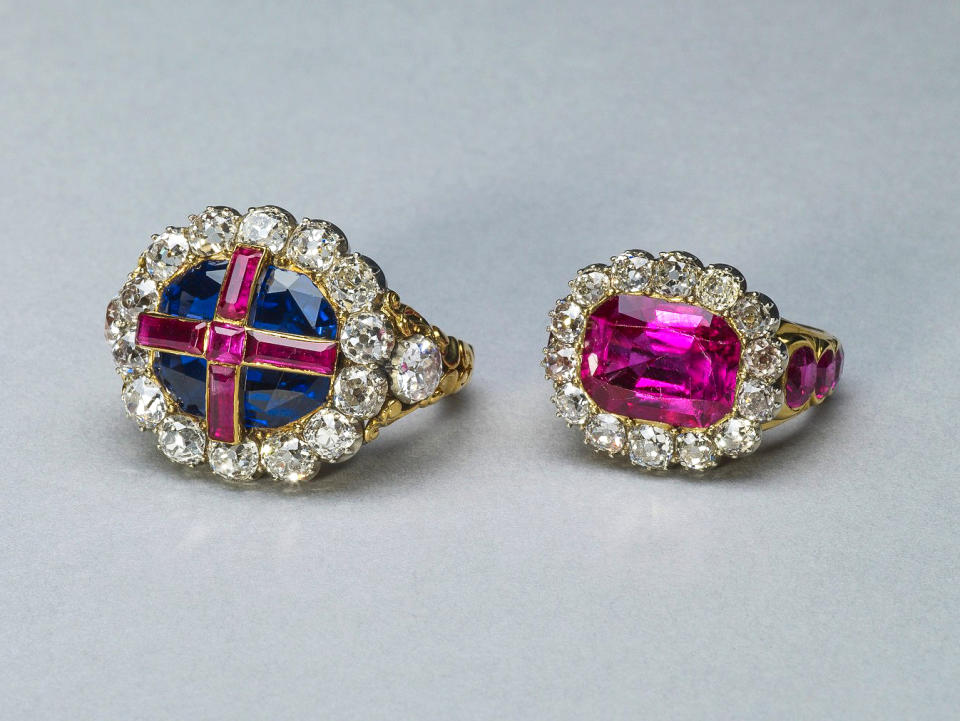
As in a wedding, this ring symbolizes the king’s marriage to the nation. This one will be placed on the fourth finger of his hand by Justin Welby, the archbishop of Canterbury, during the investiture section of the ceremony, after the king has been anointed with oil, when he receives items representing chivalric, knightly values.
The ring has a blue octagonal sapphire in a gold setting overlaid with five rubies forming a cross representing the cross of St. George, as seen in the English flag. It was made for the coronation of William IV in 1831.
The queen consort’s ring, a ruby in a gold setting, was made for the coronation of King William IV and Queen Adelaide in 1831, and it has been used by three queens consort: Queen Alexandra, Queen Mary, and Queen Elizabeth, later called the Queen Mother.
King’s spurs
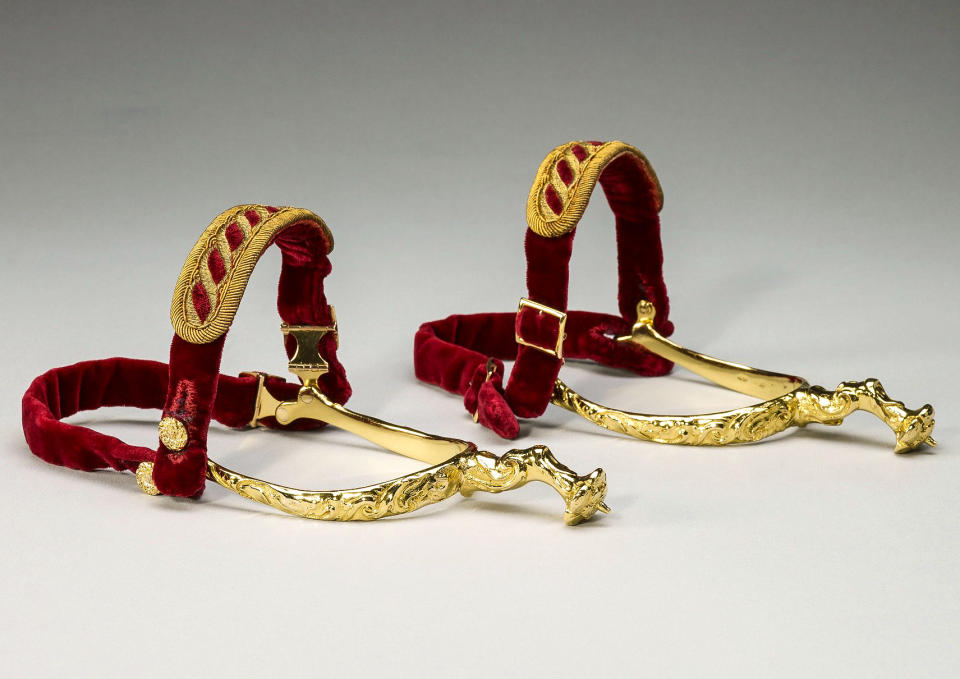
The king is given golden spurs to represent the tradition of knighthood, a tradition dating to the coronation of Richard I, the Lionheart, in 1189. Given to the monarch during the investiture — after the anointing but before the crowning — these spurs were made for Charles II in 1661; the straps were replaced in 1820 for George IV.
The Sword of Offering and other ceremonial swords
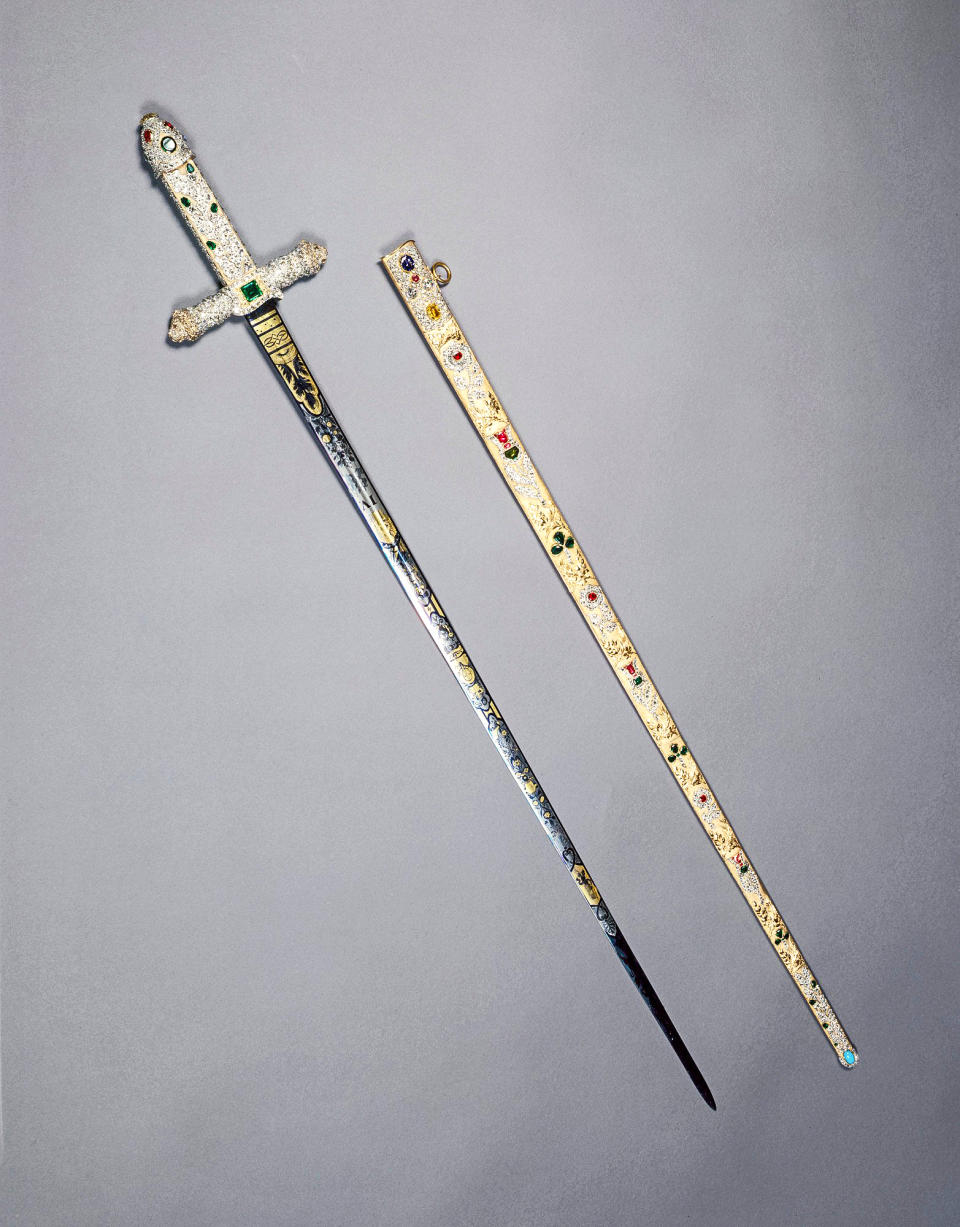
Also made in 1820, this sword has a steel blade, mounted in gold and set with jewels, which form a rose, a thistle, a shamrock, oak leaves, acorns and lions’ heads. The sword, which is contained in a gold-covered leather scabbard, continues the knightly theme of the ancient ceremony.
The sword is one of the royal symbols given to the monarch during the investiture, when the sovereign is robed and presented with a number of symbolic ornaments. The archbishop will bless the sword and hand it to Charles with the injunction that it should be used for the protection of good and the punishment of evil.
The Armills
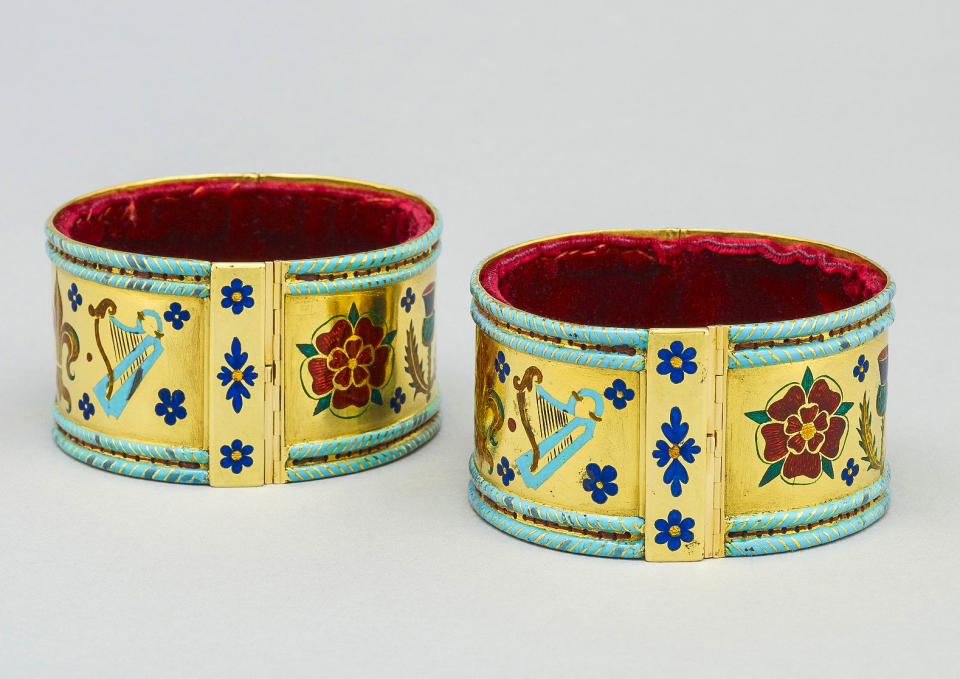
These bracelets, made from gold, decorative enamel and lined with velvet, are referred to in the ceremony schedule as “bracelets of sincerity and wisdom.” Like many coronation items, they date to 1661 and have been used at every coronation from then to 1953, when new ones were made for Elizabeth II.
The exact purpose and symbolism of the bracelets are unclear. The Royal Collection Trust said they are thought to relate to ancient symbols of knighthood and military leadership.
This article was originally published on NBCNews.com

